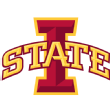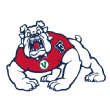Other regions: South | East | West
It's upset time, baby. We've gone deep once again in analyzing each of the six Giant vs. Killer matchups for each of the four regions. Remember, a Giant Killer is any team that beats an opponent seeded at least five spots higher. See our full methodology for more details.
We are utilizing our standard categories of Best Bets, Worth A Long Look, Not Completely Crazy and Stay Away. If you object to a game's placement, you're arguing with math. Our statistical model generates upset odds for each game. Those odds are based on three key factors: basic power ratings, teams' "Secret Sauce" (their statistical similarity to past Davids and Goliaths) and the matchup between Giants and Killers' playing styles. This year, we introduced a similar games component that is not yet a predictive part of the model, but it added interesting insights. Below each game's upset odds, you'll find data on how similar GK games dating back to 2007 turned out.
Worth a long look
No. 6 Seton Hall (83.4 Giant rating, as a percent chance of beating an average Giant Killer) versus No. 11 Gonzaga (18.5 Giant Killer rating, as a percent chance of beating an average Giant)


Upset chance: 32.6 percent
In the four most similar GK matchups since 2007, the Giants went 4-0, outscoring the Killers by an average of 9.5 points per 100 possessions.
Every year, some team enters the tourney on a sizzling streak, generates all sorts of hopes for a deep run and then flames out in the first round. Could the Pirates be the latest example? Our model says there's a strong shot. It's been a long time since Gonzaga was able to embrace its Giant-Killing roots and truth be told, the Bulldogs don't belong in this position. Our model pegs them as the 26th-best team in the country, which means they are more like a No. 7 seed than an 11. And it also means they are better than Seton Hall, if you believe in power rankings, since the Pirates rank 36th.
So why, then, is Seton Hall still favored? The answer lies in our model's "Secret Sauce." The Pirates do all sorts of things that historically help Giants ward off upsets, while Gonzaga doesn't play much like a Killer. Nowhere is that more evident than in the Bulldogs' defense. The best Giant Killers tend to gamble for steals, but the Zags force turnovers just 14.9 percent of the time. That's especially unfortunate against Seton Hall, because a ballhawking D is the best way to beat the Pirates, who give it away on 19.5 percent of possessions.
Gonzaga's strength, instead, lies in its efficiency and rebounding. Only two teams in the country ranked in the top 20 in effective field goal percentage on both offense and defense: Michigan State and the Zags. That's mostly due to their formidable inside game. Even without the injured Przemek Karnowski, the Bulldogs still feature a dominant duo in Kyle Wiltjer (20.7 PPG, 6.5 RPG, .424 3FG) and Domantas Sabonis (17.4 PPG, 11.6 RPG). They're the reason why foes only grab 25.9 percent of available offensive rebounds, and they loom as a big problem for Seton Hall: Although the Pirates are a guard-oriented team, offensive rebounding is their secret weapon (35 percent of missed shots).
Instead, Seton Hall will have to speed the Zags up and pressure the suspect backcourt of Josh Perkins, Kyle Dranginis and Eric McClellan. That approach worked against Xavier and Villanova in the Big East tournament, and few players in the country are playing better than Isaiah Whitehead right now. The key is whether streaky Khadeen Carrington can knock down his 3s. If he does, and if Derrick Gordon and Desi Rodriguez keep Seton Hall's defense humming (they're 17th in the nation in efficiency), then this should be as competitive a game as you'll find in the first round. It just shouldn't be looked at as a typical 6-11 matchup -- not based on either team's ability.
No. 4 Iowa State (79.2) versus No. 13 Iona (10.7)


Upset chance: 25.5 percent
In the four most similar GK matchups since 2007, the Killers went 3-1, outscoring the Giants by an average of 8.3 points per 100 possessions.
If our model were a 1980s fighter pilot, it would have this to say. If you enjoy up-tempo basketball, this is the game for you, as both teams will look to push the ball at every opportunity. Usually, that favors the Giant, since extra possessions give the more talented team an increased chance to assert itself. But when a Perimeter Killer meets a Generic Giant, something different happens. Since 2007, those matchups led to upsets 42.1 percent of the time. And of the four games most similar to this one, three ended in upsets: Notre Dame-Winthrop (2007), Georgetown-VCU (2011) and Georgetown-Ohio (2010). In each of those games, the Giant struggled to take care of the ball and couldn't contain the Killer's transition game. Can Iowa State succeed where they failed?
Maybe. The Cyclones are typically adept at avoiding turnovers, with Monte Morris controlling the ball and Georges Niang initiating offense in his point forward role. They only give the ball up on 16 percent of possessions, part of an offense that ranks third in the nation in adjusted efficiency (120.5 points per 100 possessions). But defense? That's a problem. Iowa State doesn't force turnovers. It doesn't grab defensive rebounds. It lets foes score too easily in the paint. That last issue is a subtle key to this game: Iona is a high-volume 3-point shooting team (44.2 percent of attempts), and it will need to hit those long balls to win. But if do-everything senior A.J. English (22.4 ppg, 6.2 APG, 5.0 RPG) can get to the rim early for easy buckets, Iona can find the balance that it often struggles to achieve, and set up better looks from the perimeter. The Gaels don't usually emphasize offensive rebounds, but they have an ace in the hole to take advantage of Iowa State's weakness: Jordan Washington. The 6-foot-8 forward ranks second in the nation in offensive rebound percentage (18.1) and posts remarkable stats (13.8 PPG, 6.2 RPG) in limited playing time (18.4 MPG). Why the quick hook? He fouls 8.1 times per 40 minutes. If he can find a way to stay on the court against the Cyclones, he could be the difference in a game with a very real chance of an upset.
No. 5 Purdue (86.6) versus No. 12 Arkansas-Little Rock (13.4)


Upset chance: 19 percent
In the four most similar GK matchups since 2007, the Giants went 4-0, outscoring the Killers by an average of 12.6 points per 100 possessions.
History is not on Little Rock's side. Purdue is a member of the Pack-Line Giant family, a group of teams that emphasizes defensive rebounding, positional D and a slow pace. Little Rock, meanwhile, profiles as a Generic Killer, meaning they don't feature any distinctive style. And since 2007, Generic Killers have defeated Pack-Line Giants just 6 percent of the time.
Why are the odds better here, then? Well, the Trojans are better than your average Generic Killer. They're the 47th-best team in the country on KenPom, and they emphasize a number of key Killer traits -- just not in a typical combination. For instance, they force turnovers at a high rate (21.4 percent of possessions), but do so while playing at a sloth-like pace (64 adjusted possessions per game, 345th in the country). They take care of the ball (15.9 percent turnover rate) and hit 38.7 percent of their 3s, but don't shoot them particularly often (34.7 percent of field goal attempts). And on defense, they pack it in and let teams fire away from deep (40 percent of attempts), but somehow hold them to just 30.1 percent 3-point shooting (seventh in the country). Like we said, it's a weird mix.
But Purdue is steady and balanced, and has a significant advantage inside with the trio of A.J. Hammons, Caleb Swanigan and Isaac Haas. Little Rock has a 6-foot-11 forward in Lis Shoshi, but he weighs just 210 pounds; 6-foot-9 Mareik Isom plays on the wing. In other words, the Trojans could get bullied down low, especially considering the Boilermakers attack the glass ferociously at both ends. So expect Little Rock to pack it in and hope Purdue goes cold from deep, and count on the Trojans to ratchet up their own 3-point frequency. In a slow-paced game, a hot-shooting Killer can take down a cold Giant, which is why this game is worth a long look, despite the wisdom of history.
Not completely crazy
No. 3 Utah (72.8) versus No. 14 Fresno State (8.4)


Upset chance: 15.9 percent
In the four most similar GK matchups since 2007, the Giants went 3-1, outscoring the Killers by an average of 8.6 points per 100 possessions.
Utah isn't as good as the selection committee thought; it ranks 30th in our basic power ratings, below Pittsburgh, Gonzaga, Connecticut and various other teams that didn't deserve a 3-seed, either. The Utes like to control the tempo, and don't gamble for turnovers or crash the offensive boards. But they're prone to turnovers of their own, which has left them vulnerable to opponents who also like to keep things slow but know how to force steals, like Miami, Wichita State and, most hideously, Oregon.
Meanwhile, Fresno State is better than you might think for a team that hardly anybody was watching before the Bulldogs stole an automatic bid from San Diego State. And here's a key fact: They force turnovers on 20.8 percent of opponents' possessions (ranking 37th; keep an eye on big man Cullen Russo, who spends most of his minutes at center but somehow nabs steals on 3.6 percent of opponent possessions). Make no mistake: led by the phenomenal Jakob Poeltl (65 percent effective field-goal percentage), Utah can shoot the lights out, and deserves to be heavily favored. But the template does exist for an upset: in a matchup last year between teams very similar to Utah and Fresno State, Iowa State found itself clipped by 14-seed UAB, 60-59.
Stay away
No. 2 Michigan State (94.1) versus No. 15 Middle Tennessee (5.1)


Upset chance: 3.6 percent
In the four most similar GK matchups since 2007, the Giants went 4-0, outscoring the Killers by an average of 32.6 points per 100 possessions.
The Blue Raiders aren't bad. They hung with VCU back in December before losing by six, swept Old Dominion and knocked off UNC Asheville. They slow the game down, keep opponents off the offensive glass (25.5 percent rate, 19th in the country) and hit 38.9 percent of their 3-pointers. Our model says they are the 126th-best team in the nation, which is better than a couple of teams with more favorable seeds (Green Bay and Buffalo). But against Michigan State, none of that really matters. The Spartans top the power rankings section of our model, and also own several qualities that help keep Giants safe. As usual, they rebound at a superior level at both ends. They hold teams to a 42.6 percent effective field goal percentage, which is second in the nation. And if that's not enough, they're also the country's best 3-point shooting team, hitting a crazy 43.4 percent of their bombs. A top-tier Giant Killer would struggle to find a way to hurt the Spartans. And Middle Tennessee is not at that level.
No. 1 Virginia (93.1) versus No. 16 Hampton (0.5)


Upset chance: 0.6 percent
In the four most similar GK matchups since 2007, the Giants went 4-0, outscoring the Killers by an average of 39.6 points per 100 possessions.
So, uh, Hampton has the nation's 191st-ranked defense ... which is miles ahead of its offense (245th). The Pirates hit less than a third of their 3-pointers (30.9 percent). They force turnovers on only 16.9 percent of possessions and give the ball away 18.9 percent of the time. In their four games against teams ranked in the KenPom top 100, they lost by an average of 31.5 points. And now they are facing Virginia, as steady a Giant as you'll find. So, while it would be a feel-good story for the MEAC school from the Chesapeake Bay to knock off Thomas Jefferson's band of Charlottesville blue bloods, the fact is, Trump University would have about as good a chance at engineering this upset. Don't just stay away. Run away. Fast.
Thanks to Liz Bouzarth, John Harris and Kevin Hutson of Furman University for research assistance.
